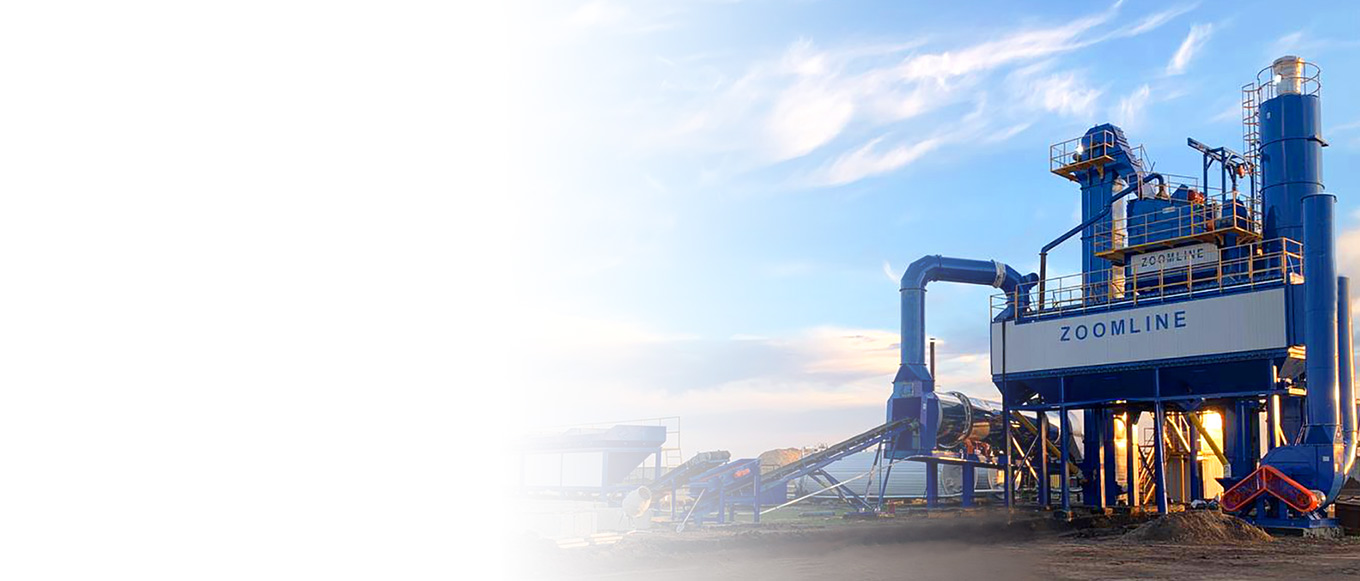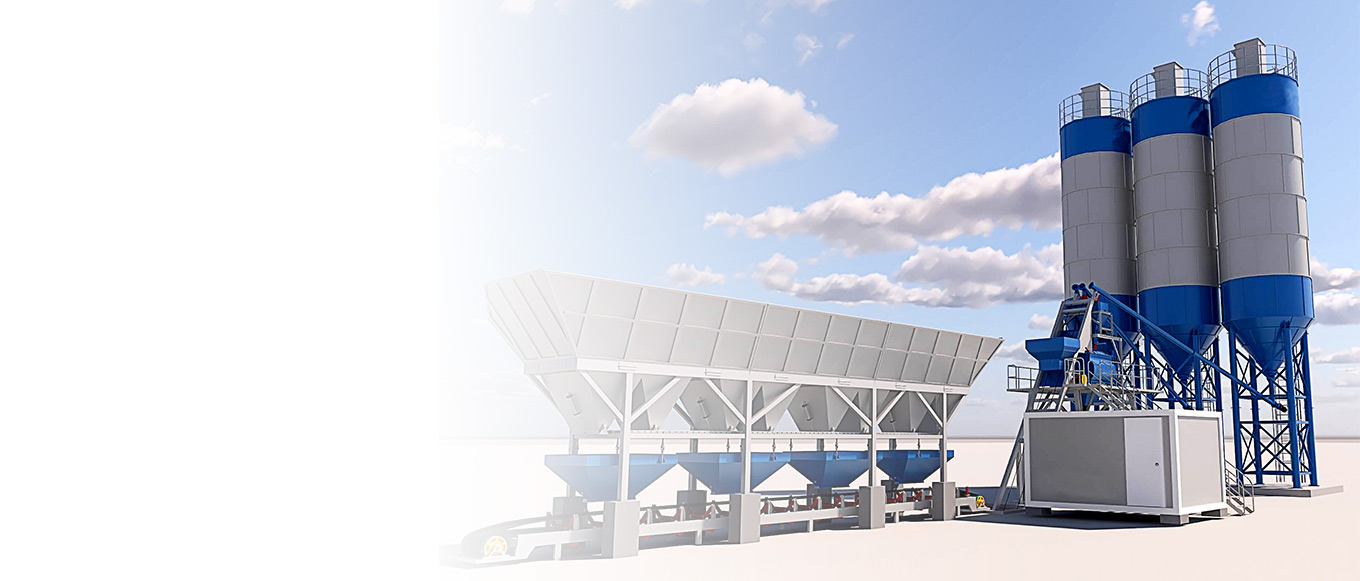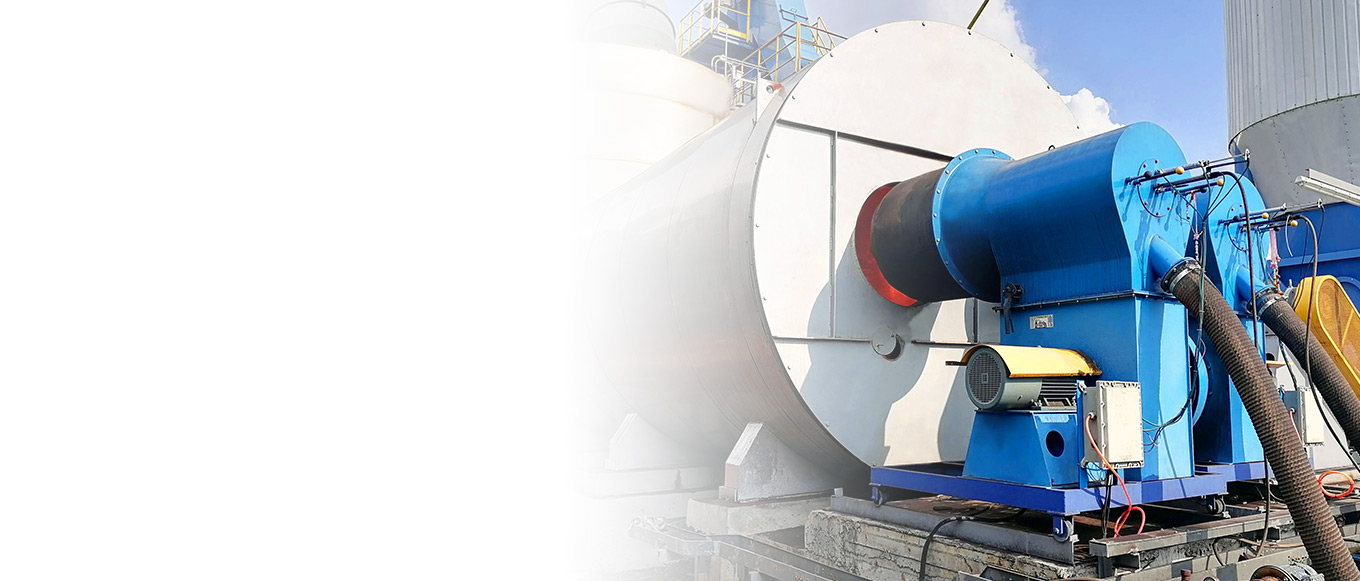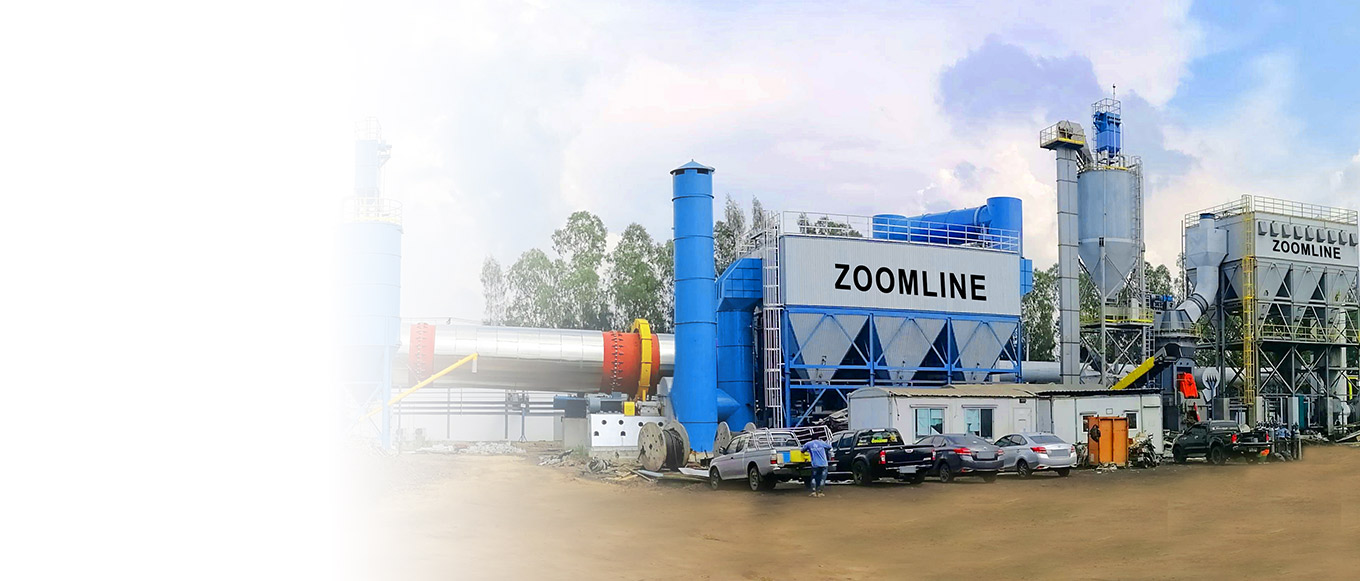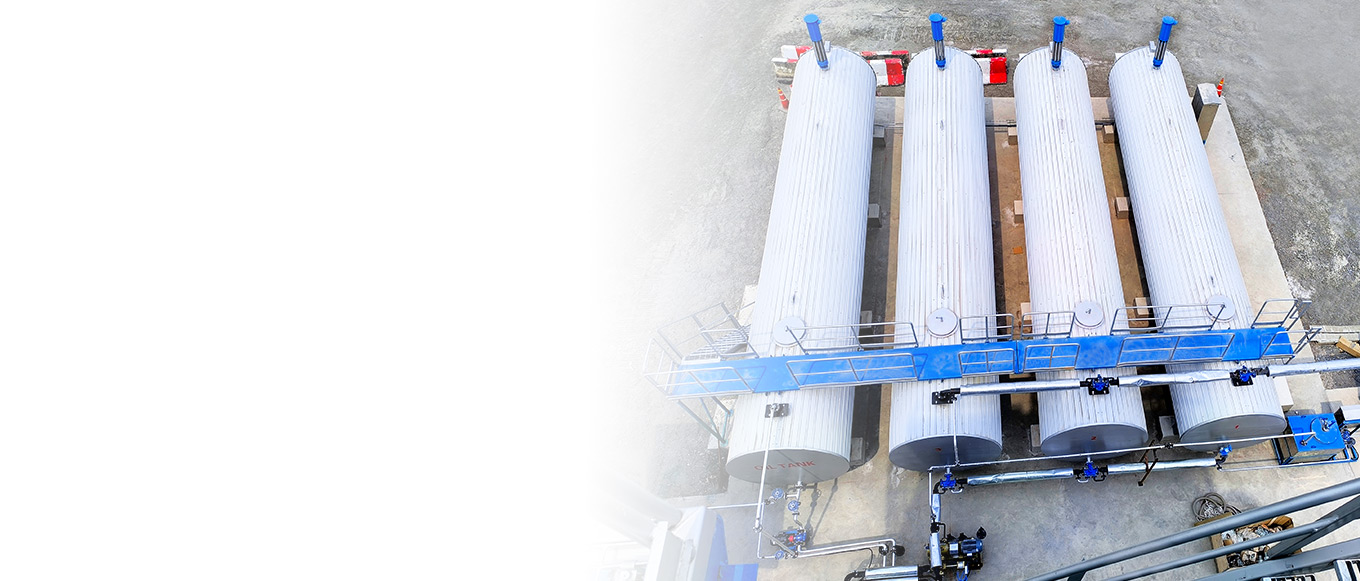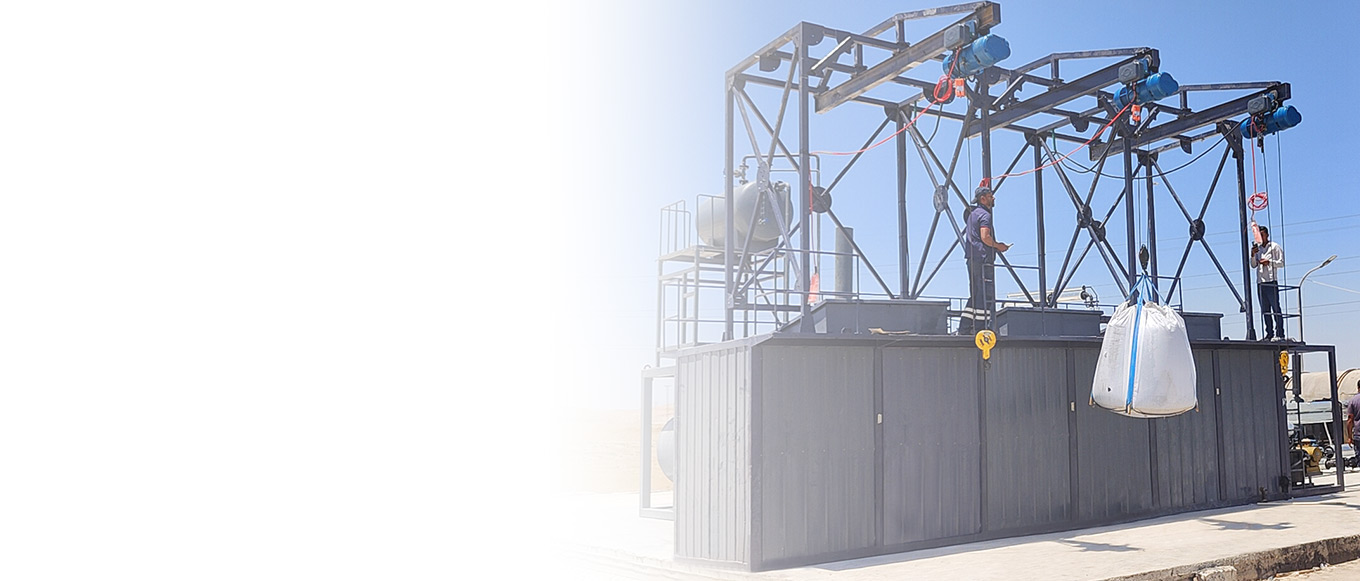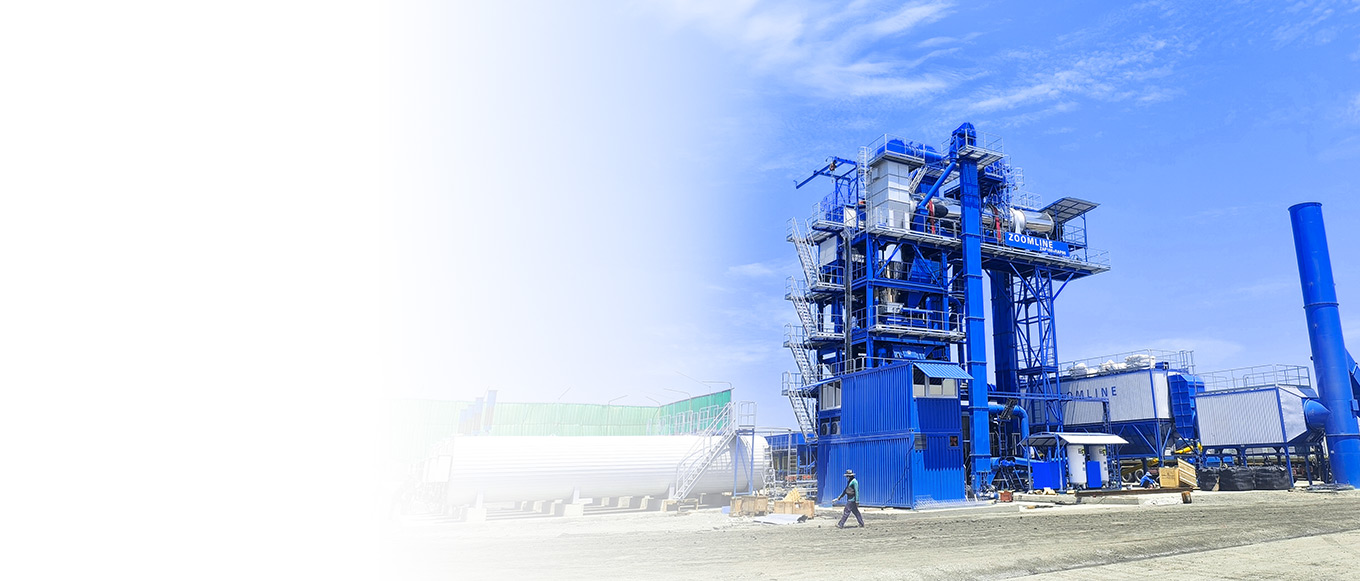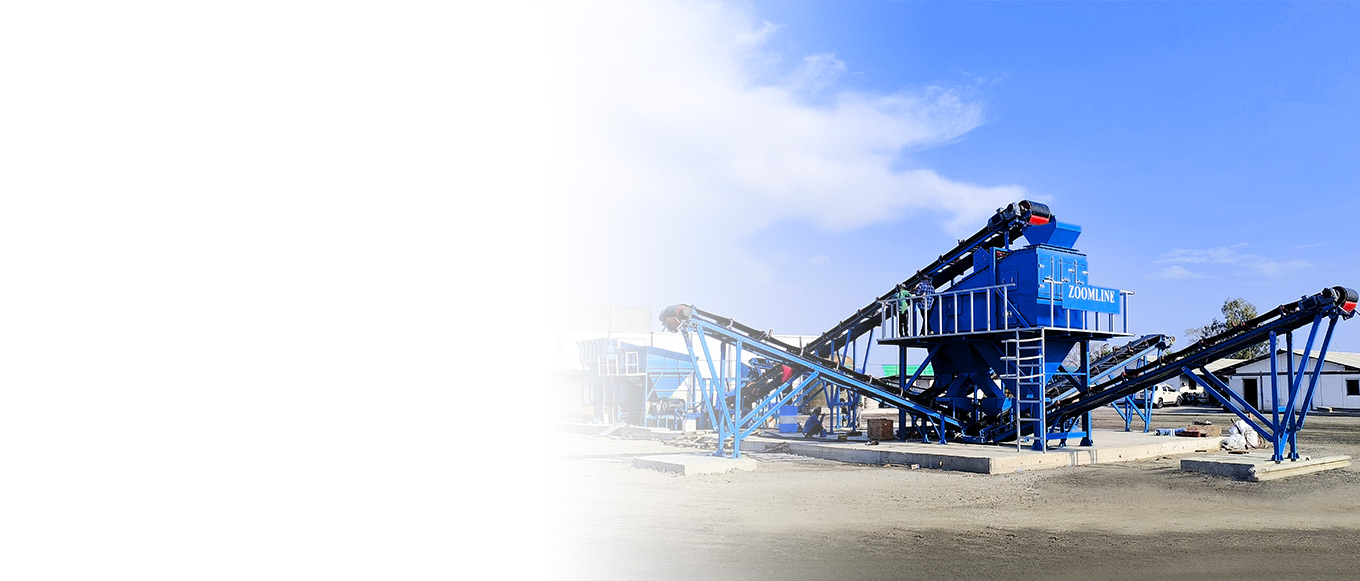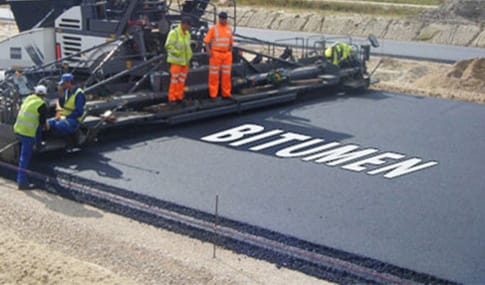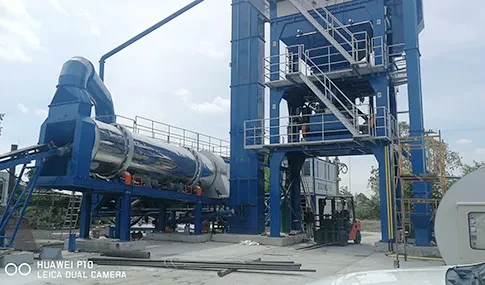In asphalt mixing plant operations, dust emissions pose a direct threat to the environment and personnel health, while also impacting corporate compliance. With increasingly stringent environmental regulations and heightened ecological awareness, dust control has evolved from an “optional measure” to an “essential requirement.” Dust collectors serve as the core of dust control systems in asphalt mixing plants. Their operational efficiency directly determines whether enterprises can meet emission standards, while also impacting production safety and equipment lifespan. This article addresses environmental requirements by analyzing the definition, types, principles, structure, and maintenance essentials of dust collectors, helping practitioners grasp the operational logic of these devices.
Dust Collectors for Asphalt Mixing Plants: Definition, Function, and Common Types
The dust collector at an asphalt mixing plant plays a crucial role in purifying gases and recovering dust during production. To understand its working principle, one must first grasp its fundamental purpose—it is environmental equipment that employs specific technologies to separate production dust.
Its core functions extend beyond dust filtration to include reducing exhaust particulate concentrations, minimizing equipment wear, safeguarding personnel health, and helping enterprises comply with regulations such as the Pollution Control Standard for Asphalt Concrete Mixing Plants (GB 3095-2012).
Based on dust removal technology principles, common dust collectors for asphalt mixing plants can be categorized into four types, each suited to specific scenarios and offering distinct advantages:
Gravity Dust Collector
These devices utilize the gravitational force of dust particles themselves. By reducing airflow velocity, dust settles naturally to the bottom of the equipment under gravity. Such dust collectors feature simple structures, low costs, and easy maintenance.
However, they are only suitable for separating larger particle sizes (typically greater than 50μm) and have low filtration efficiency for fine dust. Therefore, they are often used as “primary dust removal equipment” in conjunction with other high-efficiency dust collectors.
Baghouse Dust Collector (Bag Filter)
One of the most widely used types in asphalt mixing plants today. Its core function involves trapping dust particles within the airflow using highly permeable filter bags (commonly made of heat-resistant materials like polyester, polypropylene, or Fluoroflex).
As dust-laden gas passes through the filter bags, dust particles are trapped on the bag surface, while purified gas exits from the interior of the bags. Baghouse dust collectors achieve filtration efficiencies exceeding 99% for fine dust (particle size greater than 0.5μm) and operate across a broad temperature range (typically handling high-temperature gas streams of 80-200°C), meeting the dust removal requirements of most asphalt mixing plants.
Wet Scrubber (Water Film Scrubber)
By atomizing water into fine droplets or forming a water film, dust-laden gas comes into contact with water. Dust particles are adsorbed by the water and discharged with the water flow. The advantage of this type of scrubber is its ability to simultaneously cool the gas and remove odors, while also demonstrating strong adaptability to high-humidity and high-viscosity dust.
However, they generate wastewater requiring dedicated treatment systems and necessitate freeze protection in winter, limiting their application in dry northern regions.
Cyclone Dust Collectors
These devices utilize centrifugal force generated by rotating airflow to fling dust particles toward the inner walls, where gravity then directs them into a bottom hopper. Cyclone dust collectors feature compact structure, small footprint, and excellent temperature resistance, making them suitable for handling dust particles ranging from 10-200μm.
They are commonly used as “pre-treatment equipment” in asphalt mixing plants, first removing most coarse dust before sending the fine-dust-laden airflow to baghouse dust collectors for deep filtration, thereby reducing the load on subsequent equipment.
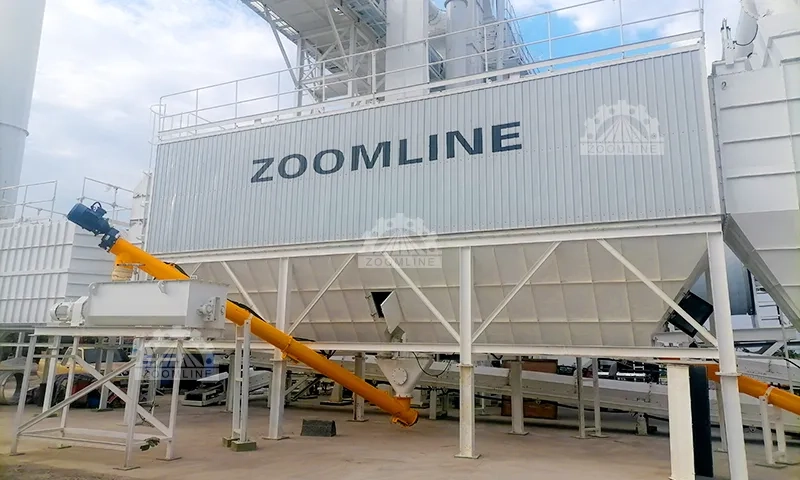
Working Principle of Asphalt Mixing Plant Dust Collectors: The Full Process from Dust Collection to Gas Purification
The dust collector at an asphalt mixing plant operates in a closed-loop process: “dust capture – separation and filtration – cleaning and regeneration – gas discharge.” While details vary across different types, all systems follow the core logic of “airflow-driven + physical separation.”
Taking the most widely used baghouse dust collector as an example, its working principle can be divided into four key steps:
Dust Collection Process: The First Step from “Generation” to “Entry”
Dust in asphalt mixing plants primarily originates from two stages: during aggregate drying, high-temperature burners cause impurities on aggregate surfaces to form dust; and during aggregate-asphalt mixing, material collisions generate fine particles.
Hot air streams at 120-180°C carry dust particles throughout the production environment. The dust collector draws in this dust-laden air through negative pressure adsorption.
The collector’s induced draft fan creates negative pressure inside the unit. This suction draws dust-laden air through ductwork connected to dust-generating points—such as drying cylinders, elevators, and finished product silos—directing it into the filtration chamber.
This step requires scientifically planned ductwork layout and precise air velocity control. Insufficient velocity may cause dust deposition and blockages, while excessive velocity increases energy consumption and accelerates duct wear.
Filtration Mechanism: Graded Separation, Precise Dust Capture
The dust collector employs graded separation filtration. Coarse dust is first removed by a cyclone separator, followed by fine dust capture via a baghouse filter. This approach enhances efficiency while extending filter media lifespan.
Primary Collection (Coarse Dust Removal)
Dust-laden airflow enters the cyclone separator and spins at high speed. Particles larger than 20μm are flung toward the cylinder wall by centrifugal force, sliding into the hopper for preliminary separation. After primary filtration, coarse dust content in the airflow is reduced by 60%-80%, significantly alleviating the load on subsequent filter bags.
Secondary Filtration (Fine Dust Removal)
The air stream, after primary treatment, enters the baghouse filter chamber. It passes through the filter bags from the outside in, where fine dust particles ranging from 0.5 to 20μm are intercepted and adsorbed by the fibers. Filter bag performance depends on media characteristics. Membrane-coated bags efficiently capture fine dust via their dense microporous surface structure while reducing dust adhesion and simplifying cleaning. Dust separation efficiency correlates positively with particle size: larger particles (>1μm) separate via gravity and centrifugal force; ultrafine dust (<1μm) relies on filter bag interception or electrostatic adsorption. This is precisely why baghouse dust collectors serve as the primary dust control equipment in asphalt mixing plants—their filtration efficiency for fine dust far surpasses that of gravity or cyclone separators.
Pulse-jet Cleaning System: Ensuring Long-Term Efficient Filter Bag Operation
Continuous filtration causes dust layers to accumulate on filter bag surfaces. Without timely cleaning, this reduces bag permeability, increases equipment resistance, and leads to decreased dust removal efficiency, fan overload, and compromised system operation.
Therefore, the cleaning system is central to the long-term, high-efficiency operation of dust collectors. Among these, the pulse-jet cleaning system is the most commonly used method for baghouse dust collectors. Its principle relies on instantaneous high-pressure, reverse airflow.
Airflow Circulation and Exhaust Emissions: The Final Step from “Purification” to ‘Compliance’
The clean air after filtration and dust removal enters the clean air chamber from inside the filter bags and is discharged by the fan after being diverted.
A portion of the clean air is returned to the drying cylinder or burner for “heat recovery,” utilizing the residual heat of the gas to reduce fuel consumption in the burner and achieve energy savings; another portion of the clean air is discharged through the exhaust stack in compliance with standards.
According to national environmental standards, particulate matter concentration in asphalt mixing plant exhaust must not exceed 30mg/m³. Key areas impose stricter requirements, limiting emissions to ≤10mg/m³. To ensure compliance, online monitoring equipment is installed at the dust collector’s exhaust outlet, continuously tracking parameters such as particulate concentration and exhaust temperature. When monitoring data exceeds limits, the system immediately triggers an alarm and activates emergency protocols, automatically increasing cleaning frequency and inspecting filter bag conditions.
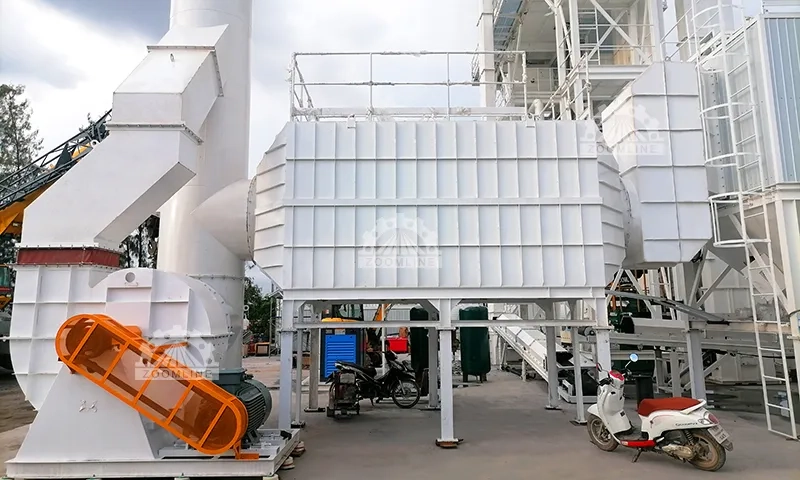
Why Must Asphalt Mixing Plants Prioritize Dust Control? — Three Critical Requirements: Environment, Safety, and Compliance
Beyond understanding dust collector principles, we must clarify: Why is dust control an indispensable aspect of asphalt mixing plant operations? Practically, the hazards of dust emissions manifest across three dimensions:
Environmental Impact: Preventing Air Pollution and Ecological Damage
Dust emissions from asphalt mixing plants contain significant particulate matter (PM10, PM2.5). These particles remain suspended in the air long-term, not only degrading regional air quality but also potentially settling with rainfall to form “dust pollution” that affects surrounding soil, vegetation, and water bodies. For instance, ultrafine dust like PM2.5 can penetrate deep into human lungs and even enter the bloodstream, posing potential health threats to nearby residents. Simultaneously, dust adhering to plant leaves impedes photosynthesis, hindering crop growth.
Safety and Health Risks: Protecting Workers and Equipment
Health Threats to Workers
For workers at asphalt mixing plants, prolonged exposure to high-dust environments can lead to respiratory diseases such as pneumoconiosis and bronchitis, potentially causing irreversible health damage in severe cases. Furthermore, dust (especially asphalt dust) is combustible. Excessive accumulation within pipelines or equipment may trigger explosions upon contact with open flames, posing significant safety hazards.
Damage to Equipment
From an equipment perspective, dust accelerates wear on components like drying drums, mixing blades, and fans, shortening their service life. Simultaneously, dust accumulation on precision components such as temperature sensors and pressure gauges can distort monitoring data, impairing precise process control and potentially causing production failures.
Compliance Requirements: The Bottom Line for Enterprise Survival and Development
In recent years, China has intensified environmental oversight of asphalt mixing plants. Regulations such as the Air Pollution Prevention and Control Law and the Environmental Protection Management Regulations for Construction Projects explicitly mandate that enterprises must install compliant dust removal equipment and ensure exhaust emissions meet national or local standards. Enterprises failing to implement dust control measures or exceeding emission limits face penalties including fines, production suspensions for rectification, or even revocation of business licenses. Concurrently, environmental credit ratings will be adversely affected, restricting enterprises in areas such as project bidding and loan financing.
Core Structure of Asphalt Mixing Plant Dust Collectors: Key Components Determine Equipment Performance
The performance of an efficient dust collector depends not only on its working principle but also on the coordinated operation of its core components. Understanding the structural composition of dust collectors enables enterprises to make more targeted decisions during equipment selection and maintenance. The core components of asphalt mixing plant dust collectors primarily include the following six parts:
Filter Bags / Cartridges
The core filtration elements directly determine dust removal efficiency and equipment resistance. Filter bags commonly used in asphalt mixing plants must possess high-temperature resistance (≥150°C), wear resistance, and corrosion resistance. Materials typically include polyester needle-punched felt and fluorocarbon filter media. Some smaller dust collectors utilize filter cartridges, which offer greater filtration area and easier replacement, though their temperature resistance is slightly lower than filter bags.
Fan and Suction Ducting
The fan serves as the “power source” driving airflow, typically employing centrifugal exhaust fans. Its power rating must be selected based on the dust collector’s airflow capacity (unit: m³/h).
Suction ducts must be constructed from wear-resistant materials (e.g., Q235 carbon steel), with diameters calculated based on air velocity (typically controlled at 12-18 m/s) to prevent dust deposition.
Ash Hopper and Discharge Valve
The ash hopper collects separated dust, typically designed as conical or square with a bottom slope exceeding 60° to prevent dust bridging and blockage. The discharge valve, installed at the hopper bottom, ensures uniform dust discharge. Commonly used star-type discharge valves provide excellent sealing, preventing air backflow into the dust collector and maintaining negative pressure conditions.
Temperature and Pressure Control System
The dust-laden airflow from asphalt mixing plants operates at elevated temperatures. Excessive heat (exceeding the temperature tolerance of filter bags) can cause bag burnout, while insufficient heat (below the dew point temperature) leads to moisture condensation within the airflow, causing dust agglomeration and filter bag blockage. Therefore, the dust collector must be equipped with temperature sensors and heating devices to continuously monitor and regulate airflow temperature. while pressure sensors monitor filter bag resistance to trigger the cleaning system.
Pulse-Jet Cleaning Device
This includes components such as pulse valves, air tanks, and blow pipes. The response speed of pulse valves directly impacts cleaning efficiency; electromagnetic pulse valves are typically chosen for their sensitivity and longevity. Air tanks must have sufficient volume to ensure stable compressed air pressure during cleaning.
Housing and Sealing Components
The dust collector housing must possess adequate strength and sealing integrity, typically fabricated from welded steel plates. The inner walls may be coated with anti-corrosion paint to extend service life. Sealing components (e.g., filter bag inlet seals, pipe connection gaskets) require high-temperature and aging-resistant materials (such as silicone rubber) to prevent air leakage.
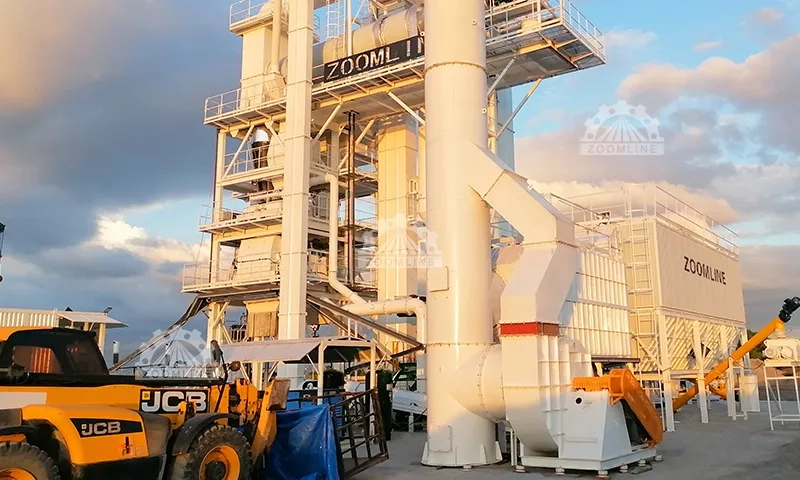
Advantages of High-Efficiency Dust Collectors: Beyond Compliance, Enhancing Production Efficiency
For asphalt mixing plants, equipping a high-efficiency dust collection system is not merely a passive choice to “meet environmental requirements,” but an active strategy to “reduce costs and boost efficiency.” Specifically, the advantages of high-efficiency dust collectors are primarily reflected in the following four aspects:
Improving Air Quality and Ensuring Operational Safety
High-efficiency dust collectors maintain on-site dust concentrations below 5mg/m³, significantly improving working conditions, reducing occupational disease risks, and lowering corporate safety management costs and liability exposure.
Recovering Heat to Reduce Fuel Consumption
As mentioned earlier, purified air carries substantial heat (typically 100-150°C), which can be redirected to drying drums or burners to partially replace fuel for aggregate heating.
Statistics indicate that dust collection systems equipped with heat recovery can reduce fuel consumption at asphalt mixing plants by 5%-10%, yielding annual cost savings of hundreds of thousands of yuan.
Extend Equipment Lifespan and Reduce Maintenance Costs
Effective dust filtration significantly reduces wear on drying drums, mixing blades, fans, and other components, extending major overhaul intervals by 30%-50%. It also minimizes equipment failures caused by dust blockages, lowering maintenance frequency and spare part replacement costs.
Enhance corporate image and strengthen market competitiveness
Amid increasingly stringent environmental regulations, asphalt mixing plants equipped with high-efficiency dust removal systems gain preferential access to project bidding opportunities. They also mitigate environmental disputes with local residents, establishing a “green production” corporate image and elevating brand competitiveness.
Key Maintenance Points for Dust Collectors in Asphalt Mixing Plants: Extend Equipment Lifespan by Following These Five Steps
The efficient operation of dust collectors relies on regular, standardized maintenance. Without proper upkeep, even high-performance units may experience reduced efficiency and frequent malfunctions. Considering the production characteristics of asphalt mixing plants, dust collector maintenance should focus on the following five aspects:
Regularly Inspect Filter Bags and Promptly Replace Damaged Components
Filter bags are the core component of dust collectors. Damage allows dust to leak directly through breaches, leading to emissions exceeding standards. It is recommended to open the dust collector’s inspection door weekly to check for bag damage, aging, or clogging. For filter bags in use for over one year, conduct sampling tests for air permeability and strength. If filtration efficiency drops by more than 10%, replace the entire batch promptly.
Monitor exhaust pressure and temperature, adjust parameters promptly
Daily record the dust collector’s inlet/outlet pressure differential (normal range: 800-1500 Pa) and exhaust temperature (normal range: 80-180°C).
A sudden increase in pressure differential may indicate filter bag clogging or discharge valve malfunction. Intensify cleaning or inspect the discharge valve. If temperatures are excessively high, check the burner in the drying cylinder for abnormalities to prevent filter bag burning. If temperatures are too low, activate the heating device to avoid moisture condensation.
Clean ash hoppers and discharge valves to prevent blockages
Weekly remove dust from ash hoppers to prevent excessive buildup forming “bridging.” Monthly inspect wear on discharge valve blades; replace seals or blades if gaps are excessive to prevent air backflow. Simultaneously, regularly lubricate discharge valve bearings to ensure smooth operation.
Inspect the pulse cleaning system to ensure proper operation
Monthly check the power supply lines to the pulse valves for normal function, loose connections, or short circuits. Remove the valve cores from the pulse valves and inspect the sealing gaskets for aging or deformation. Replace them promptly if issues are found to prevent air leaks.
Additionally, periodically verify alignment between the blowpipe and filter bags. Misalignment may cause ineffective cleaning of certain bags, leading to localized dust accumulation. Adjust the blowpipe position promptly to ensure nozzle alignment with the filter bag center.
Ensure Equipment Sealing to Eliminate Air Leaks
Quarterly inspections should be conducted on the dust collector’s shell welds and maintenance door seals. If weld cracks are detected, they must be promptly repaired. If maintenance door seals are aged or deformed, they should be replaced with new seals. During installation, ensure the seals fit tightly against the door frame without gaps.
Conclusion
The dust collector at the asphalt mixing plant employs physical methods such as gravity settling, centrifugal separation, and filter bag interception. Through the processes of dust collection, filtration, cleaning, and discharge, it achieves graded separation of dust particles, strictly controls emissions, and safeguards both the environment and operational safety.
In terms of equipment selection, baghouse dust collectors are the preferred choice for asphalt mixing plants due to their high-efficiency fine dust filtration capability and wide temperature adaptability. Gravity and cyclone dust collectors serve as primary pre-treatment equipment, combined with baghouse dust collectors to form a multi-stage dust removal system, achieving highly efficient purification.
Looking ahead, as environmental regulations tighten and technologies evolve, asphalt mixing plant dust collectors will advance toward high efficiency, energy savings, and intelligent control. The adoption of new high-temperature-resistant filter materials and the deployment of smart cleaning control systems will significantly enhance dust removal efficiency and operational economics. Mastering core dust removal technologies and promptly upgrading equipment are key to achieving green development and strengthening competitiveness.

